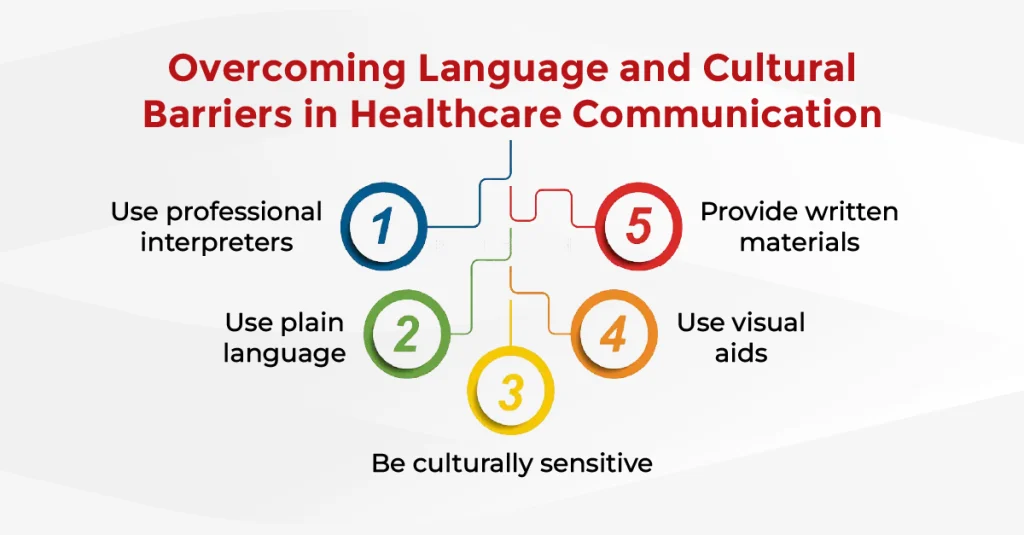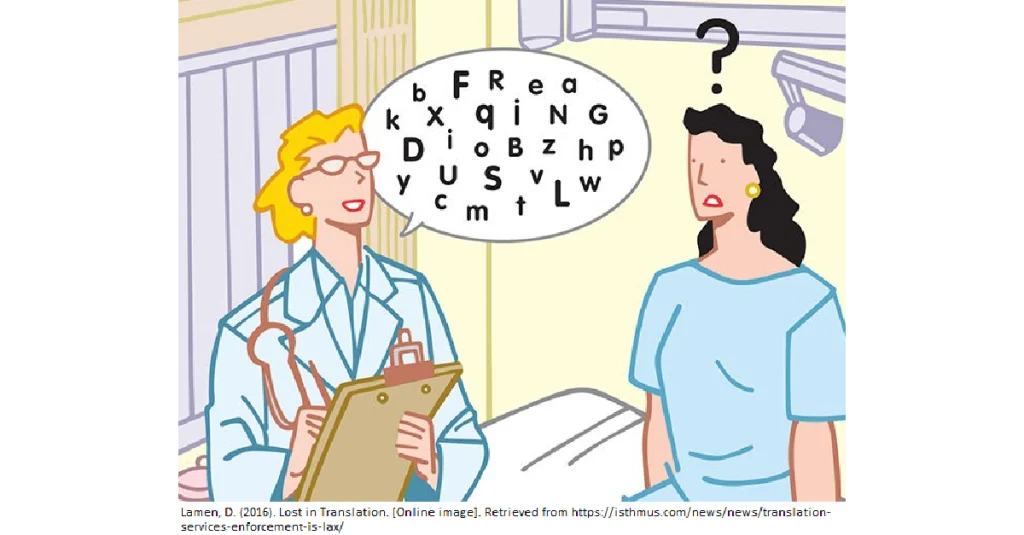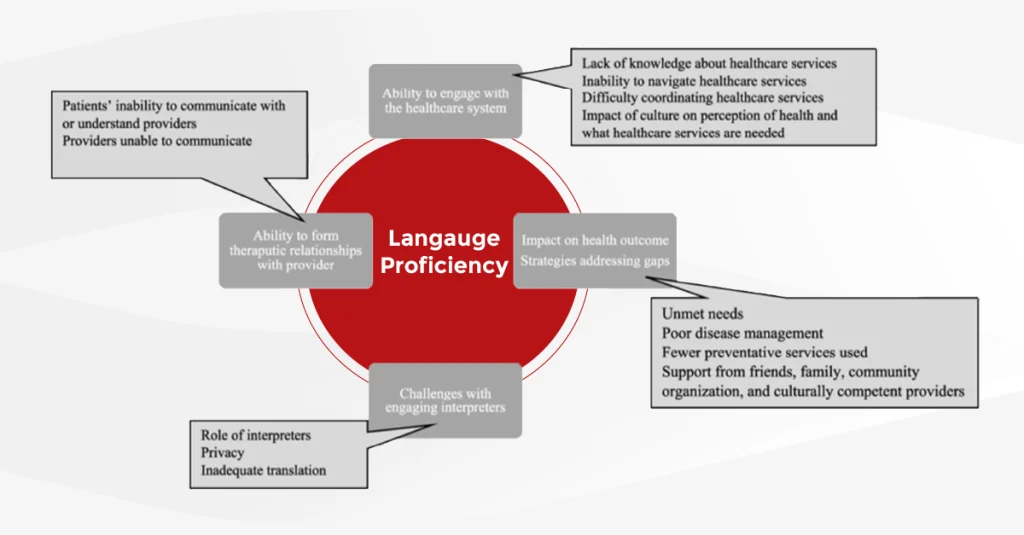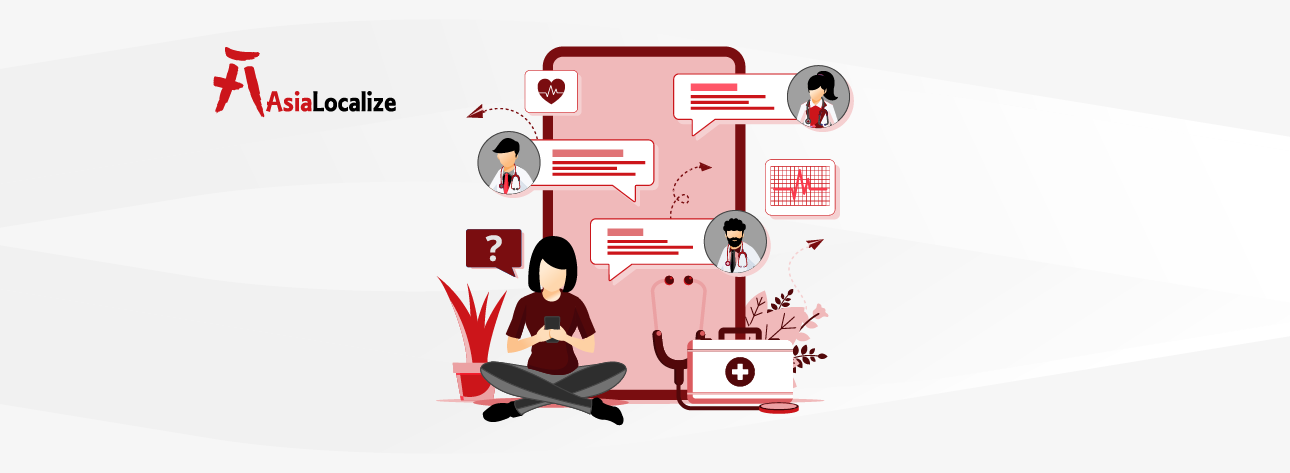You can’t heal what you can’t understand.
Now imagine being in pain, sitting across from a doctor, and realizing you don’t share the same language. For over 26 million adults in the U.S. with limited English proficiency (LEP), that moment is routine. These linguistic barriers don’t just make healthcare stressful; they can turn it dangerous, leading to missed diagnoses, treatment delays, or life-altering mistakes.
The numbers back it up. A KFF survey found that nearly half of LEP adults have hit a wall at some point—whether trying to fill out forms, talk to staff, follow instructions, or even pick up prescriptions. And the ripple effects are stark: higher rates of poor health, less insurance coverage, and more ER visits compared to English-speaking patients.
Healthcare shouldn’t be a guessing game. That’s why tackling language barriers is a lifeline. Translation and localization services are the bridge between confusion and clarity, the difference between a patient feeling lost and a patient finally feeling understood.
Understanding Language Barriers in Healthcare Settings
Some of the simplest moments in a hospital visit—like filling out a form or picking up a prescription—can quickly become hurdles when language gets in the way. Whether it’s struggling to complete intake paperwork, misunderstanding prescription labels, or trying to explain symptoms in the middle of an emergency, healthcare language barriers are everywhere—and they carry real consequences.
A KFF survey found that one in three adults with limited English proficiency (LEP) report trouble filling out forms (34%) or communicating with staff (33%). Nearly 3 in 10 struggle to understand provider instructions (30%), and more than a quarter face obstacles with prescriptions (27%). These are everyday patient communication challenges that can put health and safety at risk.
And the problem runs deeper than vocabulary. Many providers and patients don’t share common ground when it comes to health literacy. Studies show that between 26% and 60% of hospital patients couldn’t understand instructions for medications, consent forms, or basic healthcare materials. When health literacy gaps stack on top of cross-language obstacles, the result is confusion, missed treatments, and preventable errors.
Cultural misunderstanding adds another layer. Beliefs about pain tolerance, traditional remedies, or even the stigma surrounding certain illnesses can change how patients interpret medical advice. Without sensitivity to culture, meaning gets lost. Imagine a parent who relies on herbal tea to treat a fever—if the provider dismisses this without asking questions, trust frays before treatment even begins.
The Risks of Miscommunication in Medical Care
When words fail in a healthcare setting, the consequences can be real and frightening. From wrong medications to missed appointments, the fallout of miscommunication risks is heartbreaking and, unfortunately, all too common.
Imagine a hospitalized child whose parents aren’t fluent in English—studies show these young patients are nearly twice as likely to experience medical errors compared to those with English-proficient families. That’s not just a startling number; that’s a breach of trust in medical care at the most vulnerable moment.
Unequal healthcare access shows up here, too. LEP patients also tend to rely more on emergency care for issues that could’ve been prevented with clear communication. When medical jargon, rushed translation, or missing support stands between a patient and a provider, avoidable ER visits spike, pointing directly to the critical need for precision in language access in hospitals.
But numbers only tell part of the story. On an emotional level, the damage runs deeper. A patient who cannot clearly describe pain or understand a diagnosis can feel silenced—right when they’re most in need of clarity. There’s fear in their eyes, mistrust in their tone, and stress that lingers long after they leave the hospital.
The Role of Professional Translation and Interpreting Services

When words matter more than ever—when a diagnosis hangs in the balance or a treatment plan hinges on understanding—that’s when professional translation services and medical interpreting become lifesavers, not luxuries.
First, let’s untangle translation vs. interpreting.
Translators work behind the scenes, converting written materials, like consent forms, discharge instructions, or patient education documents, into the patient’s native language.
Interpreters, by contrast, are the voice in the room, listening and translating in real time, whether face-to-face, over the phone, or via video. Both are vital, but in the thick of an emotionally charged hospital visit, it’s the interpreter who becomes the patient’s lifeline.
Studies confirm what many clinicians and patients already feel: trained, professional interpreters and bilingual providers significantly improve patient satisfaction, quality of care, and clinical outcomes, reducing the likelihood of critical miscommunication. They do more than speak words; they translate empathy, calm anxiety, and bridge gaps that extend beyond language.
HIPAA-compliant translation is another cornerstone. Written materials often carry sensitive personal health information. Professional services ensure that materials remain accurate, secure, and legal, protecting both patient privacy and provider responsibility while meeting federal language access requirements and Title VI language access compliance.
So what does multilingual support bring to hospitals and clinics?
- Facilities using professional interpreters see shorter hospital stays and fewer readmissions. One study showed average hospital stays dropped from about 5 days to 2.6 days, and 30‑day readmission rates fell from 24% to about 15%, all when interpreters were involved at admission and discharge.
- Professional interpreters aren’t just quietly helpful—they slash medication errors, increase patient comprehension, and boost satisfaction. One study even found a 20% reduction in 30‑day readmission rates among LEP (Limited English Proficiency) patients with diabetes, thanks to accurate interpreting.
- In malpractice claims, one in 40 cases involves poor or missing interpreter services as a factor. That’s a legally shaky—and emotionally devastating—outcome turned preventable.
Keep your data secure and your care clear with HIPAA-compliant medical translation.
How Translation Services Support Global Pharma and Medical Devices

In pharma and medical devices, a single mistranslation can put lives at risk. That’s why specialized pharmaceutical translation services are essential for global launches.
When rolling out new drugs, partnering with expert providers ensures that labels and patient leaflets are clear, accurate, and fully regulatory-compliant. Patients everywhere deserve to understand exactly how to take their medication safely, without confusion or doubt.
Medical devices raise similar stakes. A poorly localized manual can mean misuse, errors, or even injury. Following best practices for medical device translation means more than translating words; it’s about adapting instructions, interfaces, and safety warnings so they make sense in every language and culture.
In the medical device industry, several critical strategies emerge:
- Prioritize accuracy, consistency, and speed—human translation is essential, often supported by glossaries and workflows that preserve clarity across updates and releases.
- Work with subject-matter experts and follow regulatory standards—each market has unique demands: the EU’s MDR, Canada’s bilingual labeling, or the U.S. FDA’s language guidelines. Missing deadlines or misinterpreting instructions isn’t an option.
- Use internal review and peer-validation—rolling out a device worldwide means rigorous quality control. A translation that’s technically accurate but culturally tone-deaf can mislead users.
Breaking down language barriers in healthcare is about the patient who finally understands her diagnosis, the parent who can follow a prescription without fear, and the hospital that delivers safer, more trusted care.
For over a decade, AsiaLocalize has partnered with healthcare providers, pharma leaders, and medical device companies to make that clarity possible through precise, culturally aware translation and localization. If your mission is to care for patients without borders, our mission is to make sure your message reaches them with accuracy, empathy, and impact. Let’s build that bridge together.
Discover how our specialized pharmaceutical translation services help you launch safely and globally.






